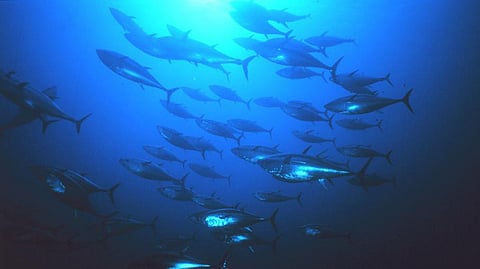Seafood safety expert dispels fears over mercury content in tuna
A Hawaii-based seafood safety specialist has stated that mercury concentrations typically found in tuna are not as harmful to the human body as previously thought.
In a guest article recently submitted to the Western Pacific Regional Fishery Management Council, Dr J. John Kaneko explained that fears about mercury content in tuna still exist mainly due to the media repeating "the same alarmist story about the dangers of mercury in fish" each year.
"The story goes that the mercury in tuna is from human activities that cause mercury pollution, primarily coal and gold mining, coal burning, industry and waste processing," said Dr Kaneko. "This ignores the fact that the source of mercury in ocean fish is from industrial and natural pollution.
"The ocean has always been a natural sink for mercury that was and continues to be released from volcanic activity."
Dr Kaneko remarked that the "story" people have come to believe is that mercury is a neurotoxin and that eating fish with mercury concentrations typically found in commercially available tuna is harmful, especially to developing fetuses and young children.
However, the BBC reported a recent study found that mercury concentrations in tuna had not changed between 1971 and 2022, which Dr Kaneko said "should be good news."
"In 1998, I collected the sample set of Hawai‘i yellowfin tuna that was analysed for mercury concentration to compare with the sample set collected in 1971. No change in mercury levels had occurred over that 27-year period, while mercury pollution increased.
"The conclusion was that the mercury in Hawai‘i yellowfin tuna came primarily from natural and not man-made pollution."
Dr Kaneko added that the BBC report "repeated the mantra of the dangers of mercury in tuna" but ignored the fact that there has never been a reported outbreak of mercury poisoning from tuna consumption.
The concern about mercury in fish originated in Minamata, Japan in the late 1950s and early 1960s, after birth defects and other effects were attributed to extremely high levels of mercury from eating contaminated seafood.
"The Minamata disaster was a case of gross industrial mercury pollution, not naturally occurring concentrations," said Dr Kaneko. "This industrial disaster created the concern about mercury in fish that persists today, even though a Minamata-scale incident has never occurred since."
Although mercury is indeed a neurotoxin with potentially harmful effects on the brain, current research continues to demonstrate that selenium can counteract or protect against the harm caused by lethal concentrations of dietary mercury in animal studies.
"For consumers of Pacific tunas and associated species [that] are the usual mercury story 'suspects', it should be a comfort to know that all commercially available fish species we have studied, contained an excess of health promoting selenium over mercury," said Dr Kaneko. "Eating these fish is more likely to protect against than contribute to mercury toxicity.
"To conclude, we should be eating more and not less seafood, regardless of mercury, as long as there are favorable selenium-mercury ratios."


